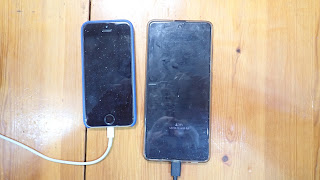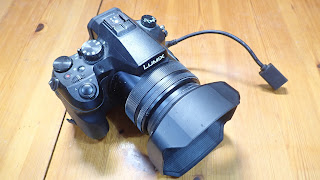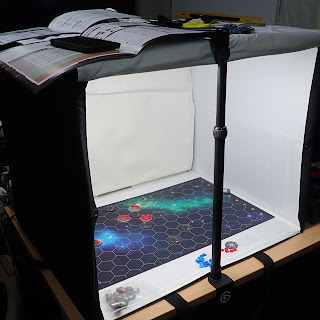The Camera
Now you have chosen the location, the lighting is ok and the sound is sorted out, now we need to worry about the camera.
Cameras really do come in all shapes and sizesFor a recent video I made I used these cameras.
I used a GoPro, A Lumix Waterproof camera, A Lumix Hybrid Camera and a DJI Osmo Pocket. All the above were used in making one video. For others I might use ... whatever cameras I have available. The best camera I certainly have is the one that I have on my when I need a camera, because it is 100% better than not having a camera.
You can make a video with all types of camera. Some however make it easier to create a particular type of video. Here are a selection of cameras that I own and take video with Different cameras can be best used on different shots, but if you only have one camera then that is the one to use.
The Mobile Phone
Everybody seems to have one or maybe two of these.
It doesn't particularly matter if it is Android or apple. New models have more lenses and more importantly more memory, and this is important because videos take up a lot of memory. Videos take up more memory than you think because you want to record them in the highest resolution you can because you can always cut it down in resolution later but you can't easily increase the resolution. You will also record more video than you will use, and sometimes you may need to repeat the shot several times until you get the right one and its not always obvious when you are recording which that one is. The mobile phone is also a good choice because you can edit the films on it as well although a bigger screen can often help here. The big choice here is landscape or portrait and that depends on what you want to do with the video you produce, which platform you want to use to show your video on and where you want to show it. If it is only for phones then portrait is ok, for everything else go landscape. TV's and monitors are still landscape. Ideally you want both and that will be the subject of another video in this series.
The Compact Camera
Why do you want to use one of these? The compact is my favourite, its nearly as small as my phone but its also waterproof and I mean much more than a phone, and for England's climate this is wonderful.
We use an Olympus Tough TG-6. The zoom is significantly better, and in my case totally waterproof and really hard to break. The lens is so much better than the phone.
The Action Camera
The GoPro is probably the go camera of choice and I find is great for high speed action shots ( for the slow mo) and with all its mounts useful for getting into tight or impossible places.
A Gimbal Camera
A camera like the DJI Osmo Pocket is great for shots where you are moving and you don't want the camera to move up and down or side to side as well. It can also take static shots as well and is great for being small and literally pocket sized.
The DSLR or Mirrorless Camera
I only own a few DSLR's and that is really what we started shooting on. I don't own a mirrorless camera but I do have a hybrid.The Lumix FZ2000 hybrid is a great camera, overlooked or dismissed by many people, yet is is one of our mainstay cameras. It has a good 20x optical zoom, takes 4K video, has an external mike slot, has a headphones socket to help monitor the sound. It sports a 1inch 20 Meg MOS sensor and can do clog video and supports WiFi. It is in many ways better than the Canon 7D Mark ii and 70D cameras which we used for photography and got pressed into service for creating video. These don't do 4K video, but we find we don't do 4k all the time. These Canon Cameras support interchangeable lenses which allow for different types of composition and the Canon 7D is quite rugged, with an all metal construction. These cameras have bigger sensors so are more capable in low light conditions and can take time lapse as well Thumbnails are important for many shoots and so these are still useful to also take high quality photographs as well. The Canons are now quite old and need to be replaced some time, but whilst they still work and take good video, there is little point in changing them.
Blackmagic Pocket Cinema Camera 4K
This is our mainstay for studio work along with a Studio Camera. The 4K is useful as we can crop to part of the image and not loose any quality. These cameras are used for my online lessons and although 4K with products like zoom and others, no one can tell the difference and most people are impressed because instead of using a laptop camera we get much better quality from these cameras. Connect these to and ATEM ( later blog) then we have some great standard streaming cameras. These cameras take interchangeable lenses and using software we can control the position, zoom aperture and quality of these cameras remotely.
Larger Format Cameras
We do have one larger format camera. Many think it looks like a big video camera. Essentially it is. It has a large battery and takes two external microphone. These cameras are often seen being used by Camera crews on site with a reporter.
The Best Camera
The Best camera is undoubtedly the one you have with you. With the camera you have you can create all types of video. For this series everything that is going to be done can be done with any camera or phone. As you improve in making better video you may want of need to get different or better kit, but it is not as important as the person behind the lens or the talent in front of the lens as we will see in the next blog












Comments
Post a Comment